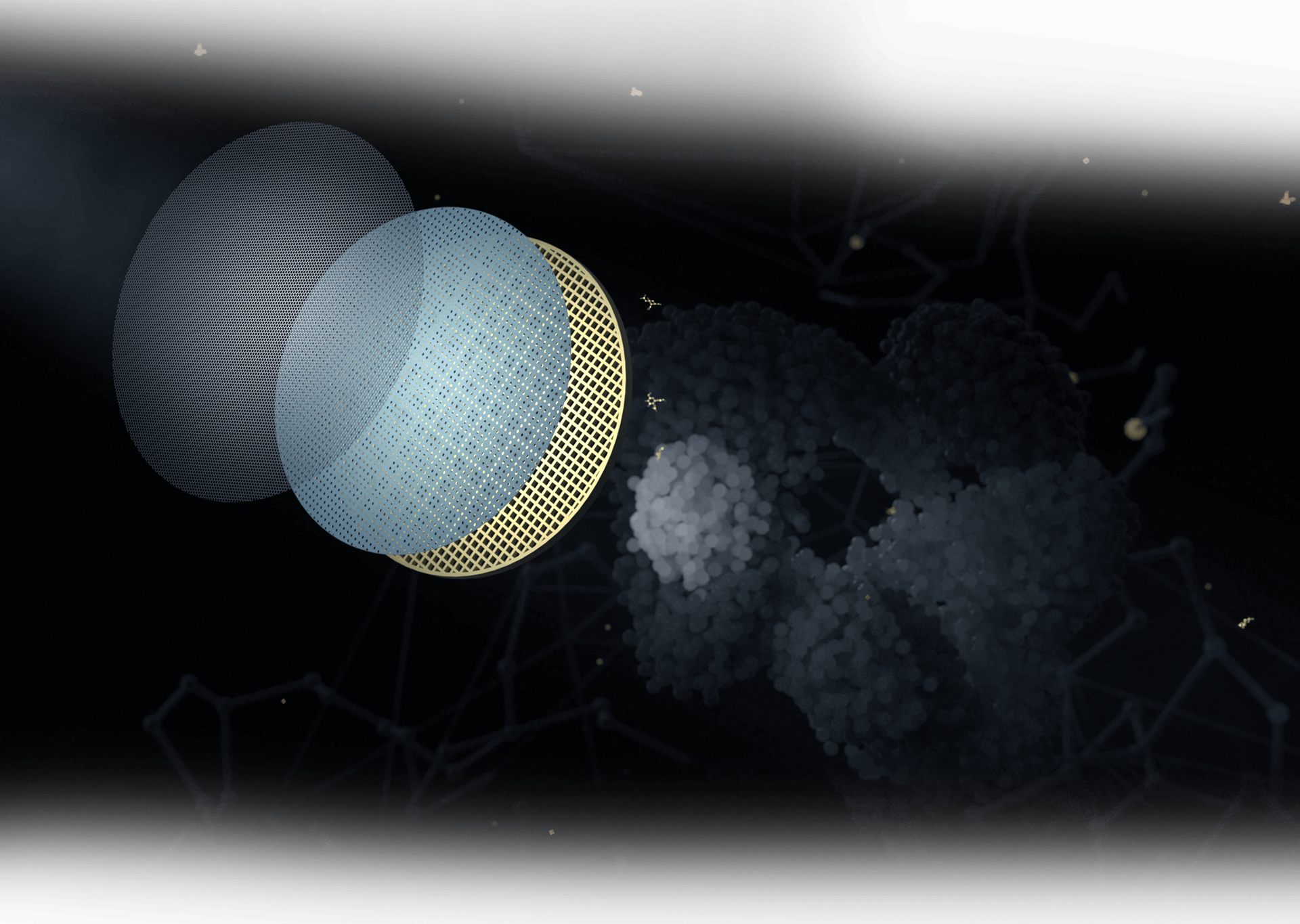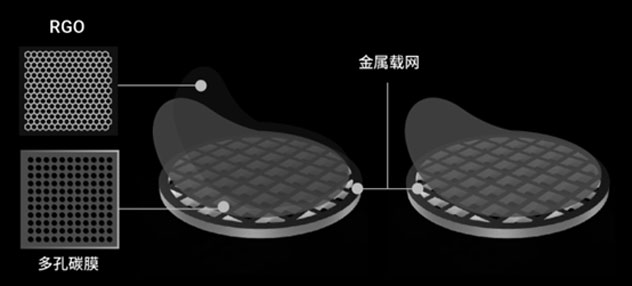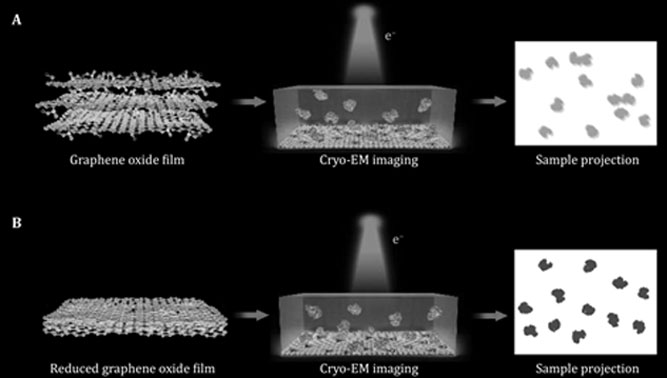



TECHNOLOGY - GraFuture™
B A C KGraFuture™ Reduced Graphene
Oxide Grid
As supporting film for high resolution cryo-EM, GraFuture™ provides special care for tricky protein to make it more suitable for visualization in the electron microscope.

Fig1. Schematic diagram of EM grids coated with reduced1
graphene oxide (left) and conventional ones (right).2
A big leap can be taken once
a suitable molecule is obtained by
preparing good cryo-EM grids.
The behavior of molecular embedded in amorphous ice plays an important role in the maximum achievable resolution for cryo-EM structures, leaving sample preparation to be the main impediment in the workflow. We are engineered to target this hurdle by exploring novel supporting films which could maintain the optimum biochemical state of the sample. Prof. Hongwei Wang,
one of the co-founders of ShuimuBio, has developed a facile and robust strategy to use reduced graphene oxide (RGO) membrane as supporting substrate for cryo-EM specimen preparation.
ShuimuBio has patented the innovation, GraFutureTM, which is demonstrated to help substantially drive particles into the holes, shield particles from air-water interface and improve signal to noise ratio.

Fig2. Difference in Graphene oxide (A) and reduced
graphene oxide (B) for single-particle cryo-EM analysis.
GraFuture™: offering promise for
challenging samples which maybe
inaccessible by cryo-EM before.
Compared with conventional supporting films, EM grids coated with single- or few-layer RGO membrane was characterized with several superior properties.
- Decreased interlayer space results in thinner ice which is just thick enough to support the particles. Lower background noise significantly improves the image quality.
- Improved biocompatibility and nice particle-absorption ability not only enhances particle concentration, but also alleviates air water interface problem which is hypothesized to cause denaturation and preferred orientation.
- Enhanced electrical/thermal conductivity contributes to no visible beam-induced footprints and minimized radiation damage.
- High mechanical strength means adequate strength to support the ice layer and reduced beam-induced motion.
Boundaries are continuously being pushed.
- Small molecules (sub-100 kDa)
- Low concentration (~100 nM)
- Fragile and sensitive proteins
- Preferential orientation on commercially purchased grids

Fig2. Difference in Graphene oxide (A) and reduced
graphene oxide (B) for single-particle cryo-EM analysis.
Featured Publication
Mechanism of spliceosome remodeling by the ATPase/ helicase Prp2 and its coactivator Spp2
Rui Bai et al. SPA & RGO grid DOI: 10.1126/science.abe8863
All major states of assembled spliceosome have been determined at near-atomic resolution, however, none of the ATPase/helicases in the presence of the spliceosome has been visualized in atomic details. Prof, Yigong Shi's laboratory has successfully resolved the cryo-EM structures of the S. cerevisiae Bact complex which is absolutely an amazing work. By comparing the structures of Prp2 before and after recruitment into the activated spliceosome, it has been addressed how spliceosome ...
V i e wReduced graphene oxide membrane as supporting film for high-resolution cryo-EM
Nan Liu et al. SPA & RGO grid DOI: 10.52601/bpr.2021.210007
Although single-particle cryo-EM is rapidly becoming an attractive technology in the field of structure biology, reliable and versatile specimen preparation can be time consuming and labor intensive. To achieve more reproducible and desirable particle behavior, Hongwei Wang's laboratory has developed a robust method to generated EM grids coated with reduced graphene oxide membrane in large batch for high-resolution cryo-EM structural determination. RGO supporting film is particularly useful in reconstruction...
V i e w